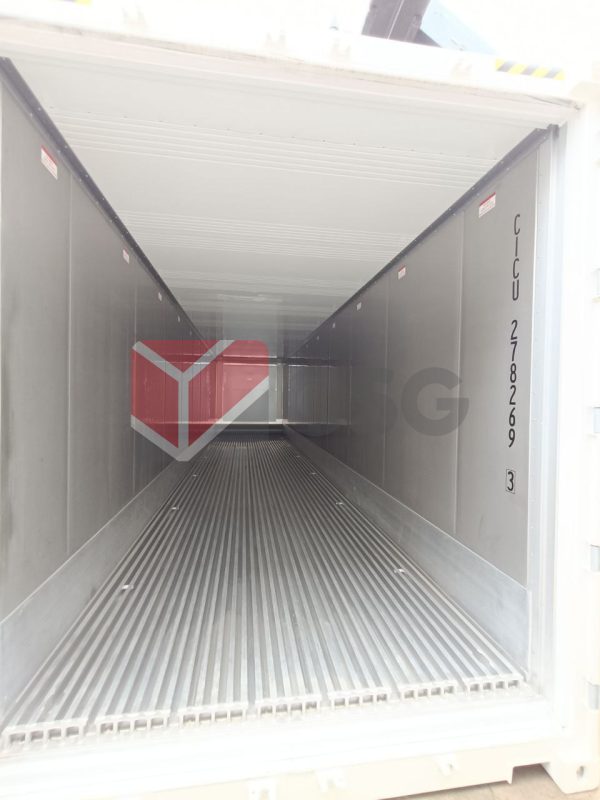Shipping Container Safety: Ensuring Structural Integrity and Security

Shipping containers have become an indispensable component of global trade, serving as versatile, durable, and cost-effective solutions for transporting goods. However, as their applications diversify beyond just shipping—into housing, offices, and even pop-up shops—ensuring their safety, structural integrity, and security becomes increasingly important. This blog explores the critical aspects of maintaining shipping container safety to ensure they remain reliable and secure in their various uses.
Understanding Shipping Container Structure
Shipping containers are designed to withstand the harsh conditions of sea transport, including heavy loads, corrosive saltwater, and extreme weather. Typically made from high-strength steel, these containers are built to endure significant stress. They feature corner castings for stacking and securing, as well as reinforced walls and floors. Despite their robust construction, maintaining their structural integrity is crucial, especially when repurposed for alternative uses.
Regular Inspections and Maintenance
Regular inspections are vital to ensure the continued safety and structural integrity of shipping containers. Key areas to inspect include:
- Corrosion and Rust: Exposure to moisture can lead to rust and corrosion, which weaken the container’s structure. Regularly check for signs of rust, particularly at the base and on the seams. Address any corrosion promptly to prevent further deterioration.
- Structural Damage: Look for dents, deformations, or cracks in the container walls, roof, and floor. Any significant damage can compromise the container’s ability to bear loads and should be repaired immediately.
- Seal Integrity: Containers are equipped with weatherproof seals to protect the interior from water ingress. Ensure that these seals are intact and replace them if they become damaged or worn out.
- Door Functionality: The doors should open and close smoothly without resistance. Check the locking mechanisms to ensure they are functioning correctly. Misaligned or damaged doors can affect the container’s overall security.
Reinforcement and Upgrades
For containers repurposed as homes, offices, or other structures, additional reinforcement may be necessary:
- Foundation: Ensure the container is placed on a stable foundation to prevent settling or shifting. Depending on the intended use, a concrete slab or steel frame may be needed to provide additional stability.
- Insulation: Containers can become hot or cold depending on the weather. Proper insulation helps regulate internal temperatures and enhances comfort. Use insulation materials that do not compromise the container’s structural integrity.
- Ventilation: Adequate ventilation is essential to prevent condensation and maintain air quality. Install vents or HVAC systems as needed, ensuring they do not weaken the container’s structure.
- Interior Modifications: When modifying the interior, such as adding windows or partitions, ensure that these changes do not compromise the container’s strength. Reinforce cut sections with appropriate framing to maintain structural integrity.
Security Measures
Security is a crucial consideration for shipping containers, whether used for storage, living spaces, or offices. Implementing effective security measures helps protect against theft, vandalism, and unauthorized access:
- Locking Systems: Invest in high-quality padlocks or electronic locking systems. Consider using multiple locks for added security, especially if the container houses valuable items or sensitive information.
- Surveillance: Install security cameras or motion sensors around the container to monitor for any suspicious activity. Surveillance systems can deter potential intruders and provide evidence if a security breach occurs.
- Alarm Systems: Incorporate alarm systems that can alert you to unauthorized access or tampering. Many modern alarm systems can be integrated with mobile apps for real-time notifications.
- Lighting: Ensure that the area surrounding the container is well-lit. Adequate lighting can deter potential intruders and enhance safety during nighttime inspections or access.
Addressing Environmental Concerns
Containers are subjected to various environmental factors that can impact their safety and structural integrity. Addressing these concerns is essential for long-term performance:
- Weather Protection: Apply protective coatings to prevent rust and corrosion. Choose coatings that are suitable for the container’s location and environmental conditions.
- Pest Control: Containers can attract pests, such as rodents or insects, especially if they are not properly sealed. Implement pest control measures and seal any potential entry points.
- Fire Safety: Ensure that containers are equipped with fire safety measures, such as extinguishers and smoke detectors. Avoid storing flammable materials inside the container unless specifically designed for such use.
Conclusion
Ensuring the safety, structural integrity, and security of shipping containers is essential for their continued functionality and effectiveness in various applications. By conducting regular inspections, performing necessary maintenance, implementing reinforcement measures, and addressing security and environmental concerns, you can extend the life of your container and ensure it remains a reliable and secure asset. As shipping containers continue to evolve beyond their traditional use, maintaining these standards will help maximize their benefits and safeguard their performance in any setting.

